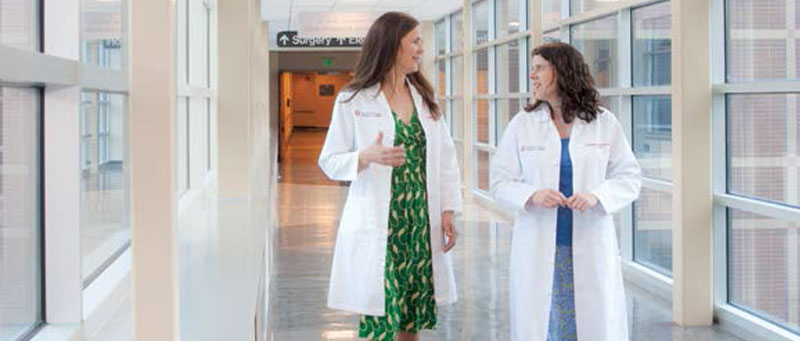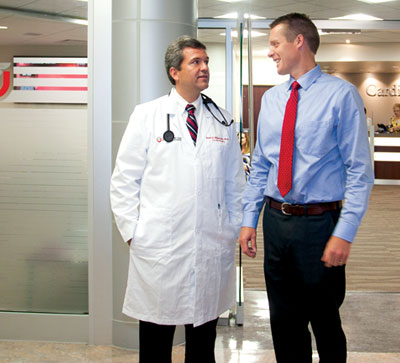Integrating Education

Slowing down care delivery, even for the noble task of educating the future generation, is not possible in today’s economic and political climate. Physicians are under enormous pressure to increase clinical revenue, efficiency, quality and patient satisfaction, and no one’s going to cut them any slack because they have a trainee in tow. “We’re losing so much of the craft of teaching because we don’t have time to explain what’s not immediately necessary for students to know,” says Katherine Anderson, M.D., assistant professor of internal medicine.
But the truth is that when students finally make the leap from student to doctor, there are gaps in skills. The question is how to fill them. “We want to educate students. That’s why we chose to work in academic medicine,” says Danielle Roussel, M.D., assistant dean for clinical curriculum and associate professor of anesthesiology. “The million-dollar question is: How can physicians train students, see more patients and still go home before 10 p.m.?”
Systemic reforms in training and funding residents are likely on the horizon, especially after this summer’s release of the controversial Institute of Medicine’s report on graduate medical education. Roussel and Anderson aren’t waiting around. They saw an opportunity to fill those gaps by creating a four-year Clinical Method program in the School of Medicine. Twenty-four core faculty physicians coach groups of 10 students. They meet with them weekly and provide insight and training for life as physicians, inside and outside of the hospital. From improving communication to navigating the electronic health record, the program emphasizes critical clinical skills that can’t be taught in the classroom.
Clinical Method, now in its second year, is a hit with students and mentors alike. “Core faculty feel this has reminded them why they love academic medicine,” says Anderson, who directs the program. They’re able to tap into a new network of energetic students and colleagues across specialties. “Burnout can be so high in medicine, so being able to really connect on a personal level makes such a difference.”




